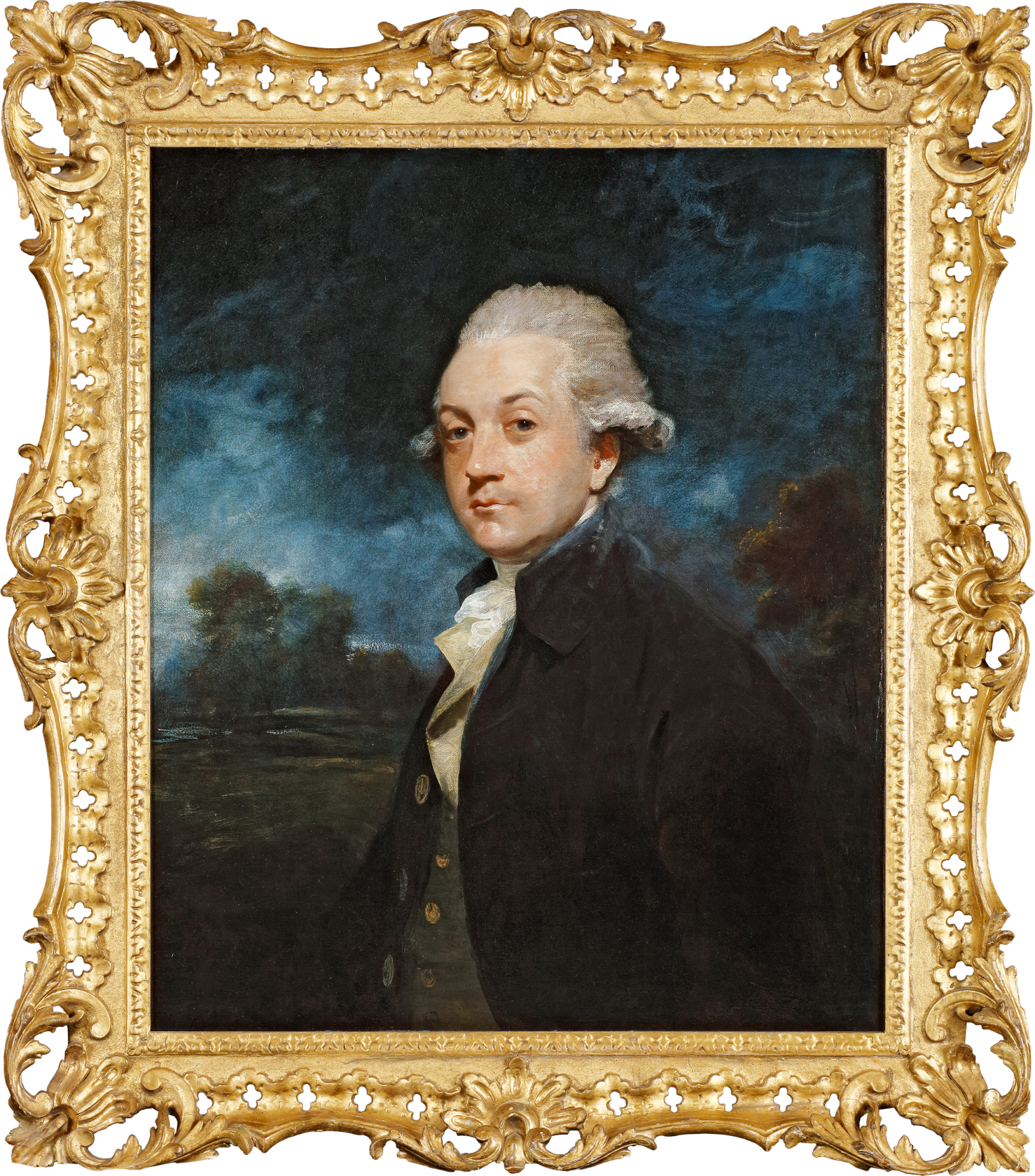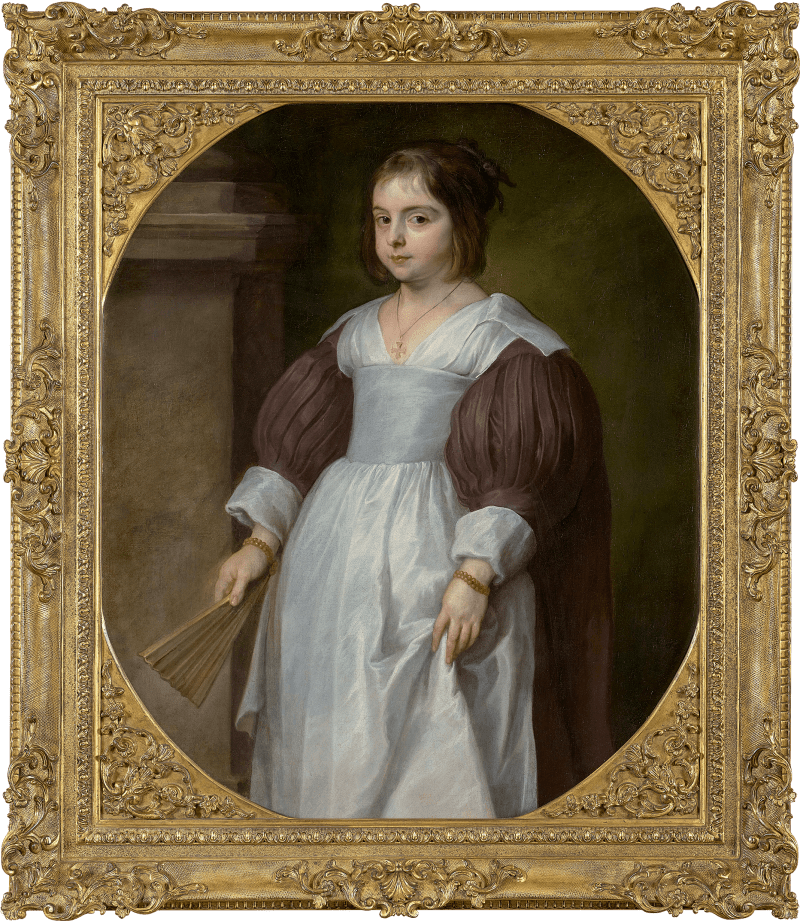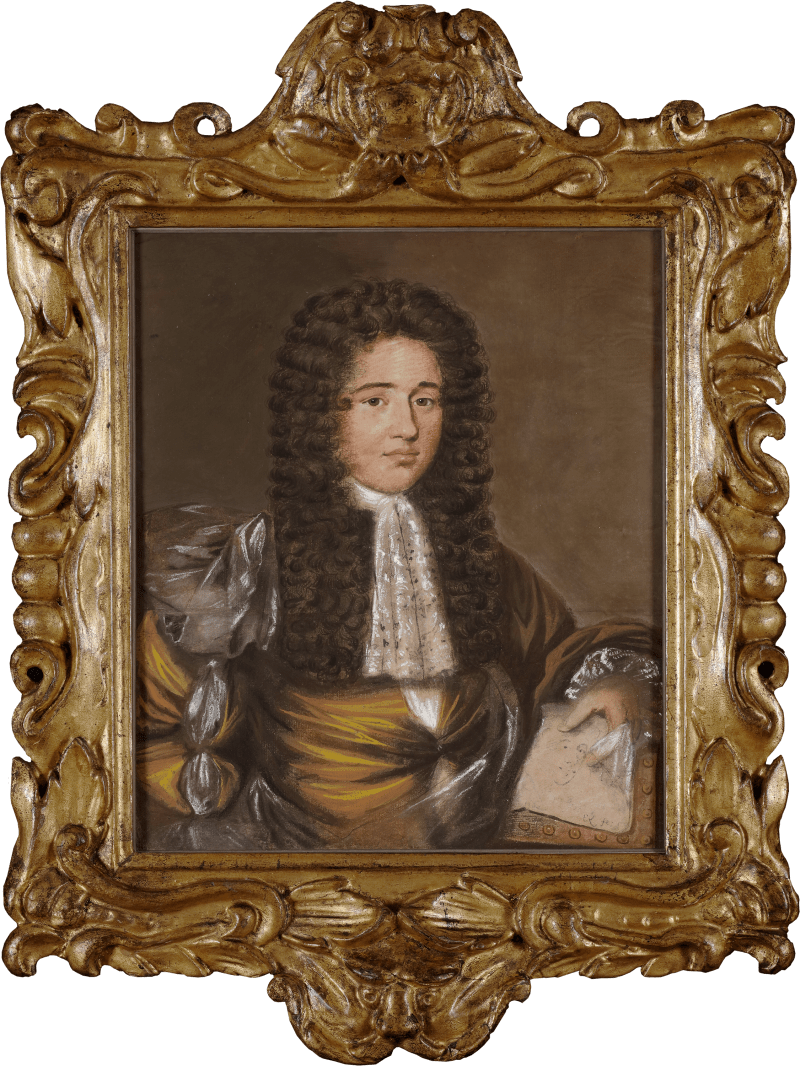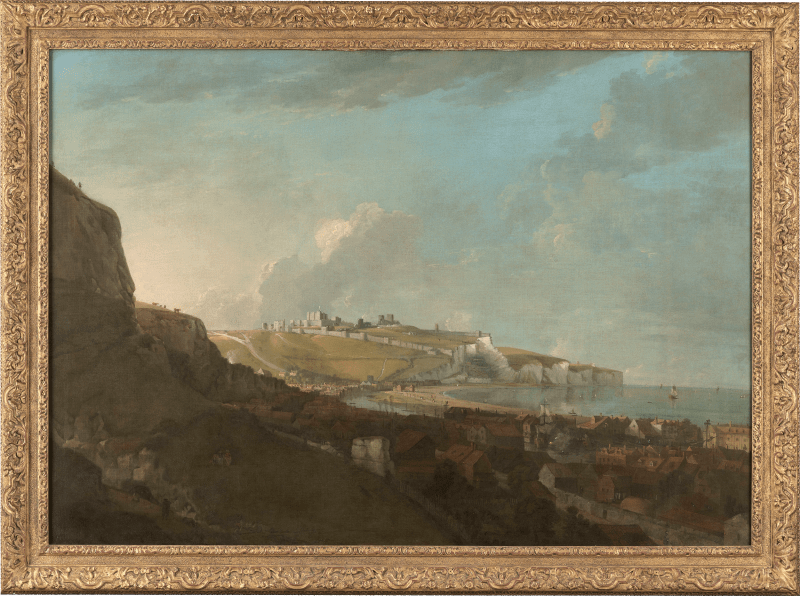Sir Joshua Reynolds is one of the most important figures in the history of British portrait painting. His remarkable combination of technical ability and theatrical mastery reinvented the genre and set a pattern for portraiture that was faithfully followed for over a hundred years. He was a staunch advocate for expression and invention in painting and believed that the slavish repetition of the form should be abandoned in favour of a more generalised and idealised approach in what is now known as the ‘Grand Manner’.
This engaging portrait was painted at the peak of Reynolds’ fame and depicts William Wentworth Fitzwilliam, the eldest son of William Fitzwilliam, and his wife, Lady Anne, the daughter of Thomas Watson-Wentworth, first Marquess of Rockingham. Fitzwilliam’s appreciation of fine art first blossomed during his grand tour, during which time he visited France, Switzerland, and Italy and returned to England with a collection of paintings by artists such as Guercino, Guido Reni, and Canaletto.[1]...
Sir Joshua Reynolds is one of the most important figures in the history of British portrait painting. His remarkable combination of technical ability and theatrical mastery reinvented the genre and set a pattern for portraiture that was faithfully followed for over a hundred years. He was a staunch advocate for expression and invention in painting and believed that the slavish repetition of the form should be abandoned in favour of a more generalised and idealised approach in what is now known as the ‘Grand Manner’.
This engaging portrait was painted at the peak of Reynolds’ fame and depicts William Wentworth Fitzwilliam, the eldest son of William Fitzwilliam, and his wife, Lady Anne, the daughter of Thomas Watson-Wentworth, first Marquess of Rockingham. Fitzwilliam’s appreciation of fine art first blossomed during his grand tour, during which time he visited France, Switzerland, and Italy and returned to England with a collection of paintings by artists such as Guercino, Guido Reni, and Canaletto.[1] Fitzwilliam's life was dramatically transformed in 1782 by the death of his maternal uncle, the Whig grandee Charles Watson-Wentworth, 2nd Marquess of Rockingham, who was Prime Minister from 1765-6 and again from March 1782 until his death. Fitzwilliam thus inherited vast estates in both England and Ireland and became one of the wealthiest men in Britain.
The portrait is one of two likenesses of Fitzwilliam by Reynolds; the first was painted c. 1763/4, likely commissioned to celebrate Fitzwilliam leaving Eton.[2] The present portrait was commissioned in 1785 by Fitzwilliam’s friend, the collector, and politician Anthony Morris Storer, who also commissioned the subsequent engraving of this portrait by Joseph Grozer [fig. 1].[3] Both were at Eton together, along with Charles James Fox (who called him ‘my dear Fitz’). Reynolds's ledger records a payment of fifty guineas in July 1785, paid by Mr. Storer, for a portrait of the Earl.[4] Sittings between the Earl and Reynolds likely took place between 25 January and 20 July 1785, when Fitzwilliam was travelling between London and the North of England on account of his political duties in the capital and his two seats of Wentworth Woodhouse, Yorkshire, and Milton, near Peterborough.[5]
Astonishingly captivating in its communication of human connection, this portrait exemplifies Reynold’s ability to capture the romantic likeness of his sitters. The deft strokes which construct the landscape are distinctive of his artistic confidence. In his recent article on this portrait, David Wilson argues that the turbulent sky is an allegory of ‘the emotional turmoil’ of the earl after the death of his uncle.[6]
In 1920 the portrait was put up for sale by a member of the Storer family, Mrs. Ivy Evans. Mrs. Evans was the third life tenant named under the settlement created by the Will of her grandfather, Major Storer. After family disruptions, on account of her attempt to sell the work, the painting returned to the family collection after the sale. At some point between 1920 and 1924, the painting was conserved, and it was during this process that the canvas was re-lined, covering the original inscription on the reverse which identified the artist and sitter. This later led to some confusion and in 1964 it appeared at an auction where it was described as a ‘portrait of a gentleman’ by Sir William Beechy. In 2011 the portrait was conserved, and the original inscription was revealed.
This interesting and technically accomplished portrait not only sheds light on Reynolds’ studio practice but offers valuable insight into his technique during his later career. For example, the warm complexion of his sitters’ face has been preserved in exceptional condition on account of the liberal use of vermillion – which the artist used more frequently during his later career. On this subject, David Wilson notes; ‘A touch of deep red pigment has been applied to the sitter's left ear so as clearly to delineate it under the shadow created by the jutting curls of the wig. As has been noted elsewhere about Reynolds's portraits, the rich colours employed by the artist, not least in the landscape and the sky, and the impasto (in this case) of the stock, and passages of the waistcoat and wig, produce a 'remarkable physical proximity' of Fitzwilliam to the viewer.’[7]
[1] David Wilson ‘Art, inheritance, law and attribution: The re-discovered portrait of Earl Fitzwilliam by Sir Joshua Reynolds, PRA’, The British Art Journal, Vol. 13, No. 3 (2012/13), p. 32.
[2] Known in two versions; Marquess Zetland and the Fitzwilliam Trustees.
[3] David Wilson ‘Art, inheritance, law and attribution: The re-discovered portrait of Earl Fitzwilliam by Sir Joshua Reynolds, PRA’, The British Art Journal, Vol. 13, No. 3 (2012/13), p. 32.
[4] David Mannings, Sir Joshua Reynolds: A Complete Catalogue of his Paintings. (New Haven & London: Yale University Press, 2000) p.197, no. 649, fig. 1459.
[5] David Wilson ‘Art, inheritance, law and attribution: The re-discovered portrait of Earl Fitzwilliam by Sir Joshua Reynolds, PRA’, The British Art Journal, Vol. 13, No. 3 (2012/13), p. 36.
[6] David Wilson ‘Art, inheritance, law and attribution: The re-discovered portrait of Earl Fitzwilliam by Sir Joshua Reynolds, PRA’, The British Art Journal, Vol. 13, No. 3 (2012/13), p. 34.
[7] David Wilson ‘Art, inheritance, law and attribution: The re-discovered portrait of Earl Fitzwilliam by Sir Joshua Reynolds, PRA’, The British Art Journal, Vol. 13, No. 3 (2012/13), p. 36.











